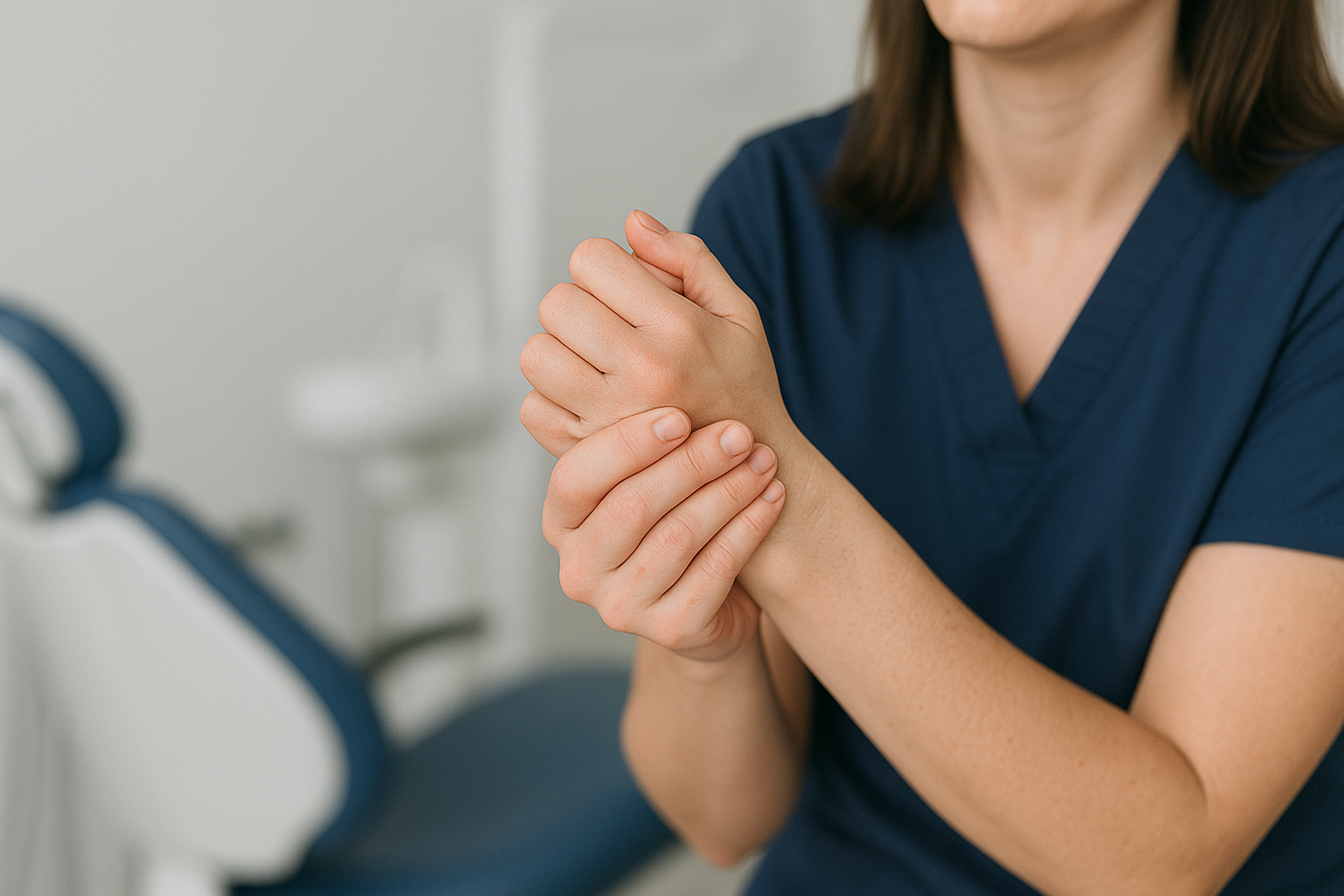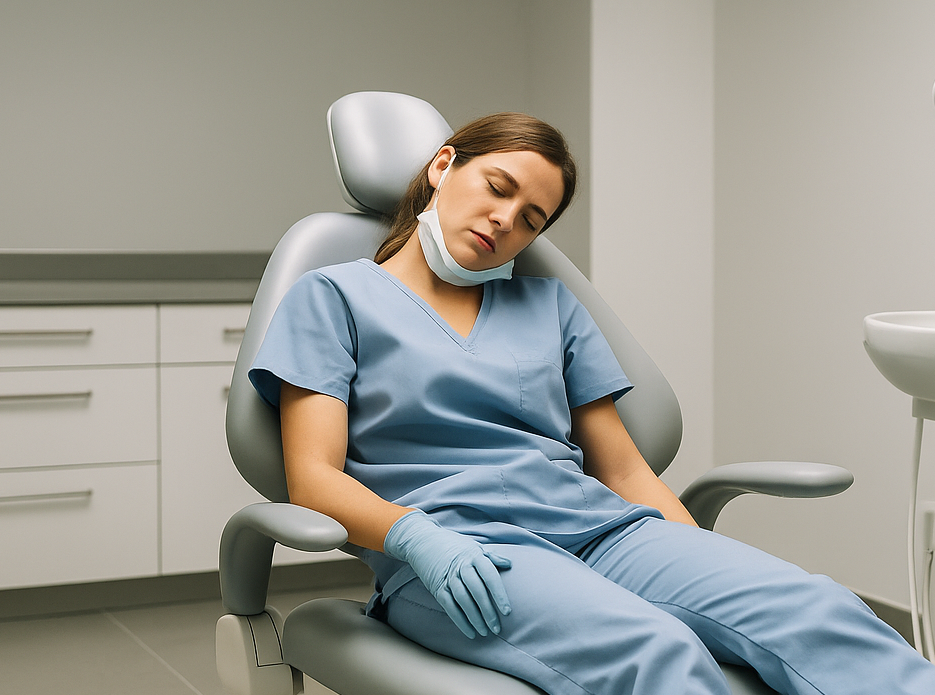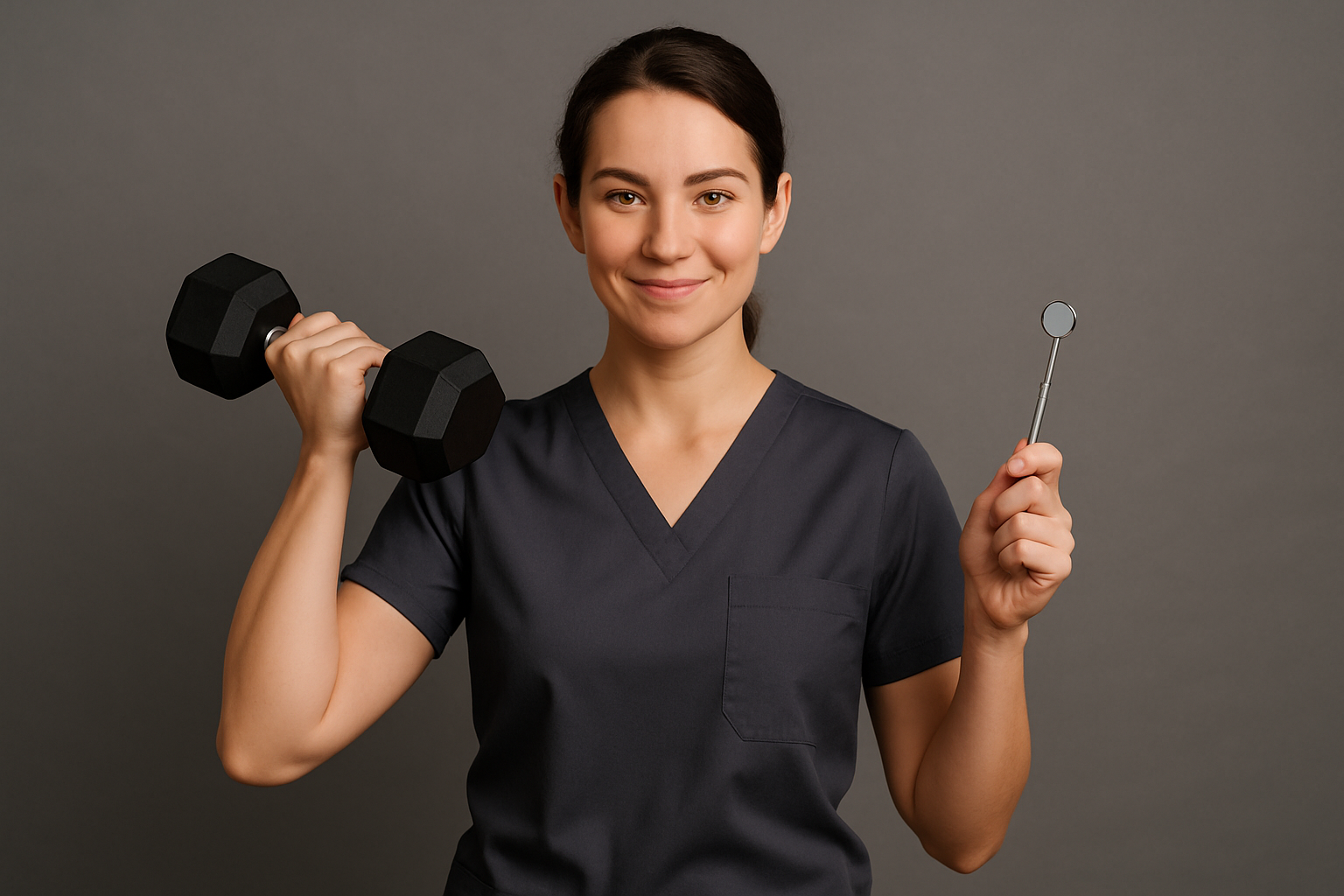
The Stories That Hit Close to Home
A few weeks ago, I was reading a thread in a dental hygiene group that stopped me in my tracks. Hygienists were sharing their arthritis struggles: bone-on-bone thumbs, shoulder surgeries, and swelling that made it hard to even hold instruments. One said she’s so afraid of dropping an instrument while working on a patient. Another said she’s already had two thumb surgeries.
These are women who’ve spent decades helping patients, and now their bodies are asking for help.
It’s a reminder that what we do every day takes a toll. And it’s not just the repetitive motions or static posture. There’s a lot more happening under the surface than we used to think.
What Causes Arthritis in Dental Hygienists?

For years, we were told osteoarthritis was all about wear and tear. Joints get used, cartilage breaks down, and pain follows. But new research says that’s only part of the story.
Scientists are finding that arthritis also involves inflammation, not just mechanical stress. The lining of the joint (the synovium) can actually become inflamed. And things like blood sugar levels, sleep, and overall metabolic health can make it worse.
That means prevention isn’t just about posture and ergonomics anymore. It’s about the whole body: how we move, eat, rest, and recover.
Movement Is Medicine
When I was 11, I broke my arm. Surgery, pins — the works. They told me the cartilage was gone and that arthritis would set in early. By 19, it did. But over the years, through consistent strength training and mindful movement, it’s only gotten better…I don’t have elbow pain anymore!
It’s easy to freeze up when something hurts. To avoid moving because you don’t want to make it worse. But when it comes to arthritis, movement is medicine.
Gentle, intentional movement increases blood flow, nourishes the joints, and helps prevent stiffness from settling in. It doesn’t have to mean an hour-long workout either. Even small “movement snacks” between patients or a short walk after work can help your joints feel more supported and less inflamed.
When you keep your body moving, you keep your tissues hydrated, your circulation strong, and your joints more resilient — exactly what we need as hygienists spending hours in static postures.
Better yet, strengthening the muscles around your joints can make a huge difference in reducing pain, especially through long clinical days.
A Promising Option: Red Light Therapy for Joint Pain

If you’ve followed me for a while, you know I’m always experimenting with tools that support recovery. And red light therapy (also called photobiomodulation) has been one of my go-tos lately.
It uses specific wavelengths of light (usually red and near-infrared) to calm inflammation and support tissue repair. Studies have shown it can reduce pain and stiffness in osteoarthritis (even in small joints like the hands).
I love it because it’s gentle, non-invasive, and easy to use at home. You’ll typically use it for around 10–20 minutes, or as directed by your device’s instructions. Every model is a little different, so follow what’s recommended for yours. There’s no downtime or weird sensations.
Be patient with it. It can take a few weeks of consistent use before you notice a difference. But over time, most feel a gradual ease in stiffness and achiness.
If you’re curious, I personally use a red & near-infrared device like this one on Amazon that targets both surface and deeper tissues. It’s not a magic fix, but it’s a supportive tool I reach for often (especially after long hygiene days).
Supporting Your Joints From the Inside Out

Since inflammation plays a big role in arthritis, what’s happening in your gut matters too. Some research shows that digestive enzymes (like bromelain or protease blends) might help the body process inflammation better.
(Ever heard an oral surgeon recommend eating pineapple the day before oral surgery? Because pineapple has beomelain!)
Now, this isn’t a “take this and your pain is gone” situation. But supporting digestion and nutrient absorption can make a difference in how your body heals and recovers overall.
If you want to try enzymes, choose a high-quality brand, start small, and always check with your doctor first (especially if you’re taking medications).
When I Put Hydrogen to the Test
The day before work, I managed to slam my cantilever patio umbrella shut — right onto my non-dominant hand. It swelled instantly, and I honestly wasn’t sure if I’d be able to retract with the mirror the next day.
I’d tried molecular-hydrogen bath bombs before in a full tub soak, but that was back when I didn’t have much pain to test them on. This time, I filled a small bowl and soaked just my hand. Along with red-light therapy, digestive enzymes, ice, and later heat, I saw the swelling go down quickly. Much faster than I expected.
The first day of work that week wasn’t exactly comfortable, but I made it through. And that experience gave me a new respect for how hydrogen can help calm inflammation and support recovery.
If you’re curious, you can find hydrogen bath tablets on Amazon. They release molecular hydrogen into the water, and early research suggests it may help lower oxidative stress and ease inflammation. It’s not a replacement for movement or other recovery work, but it can be a gentle, supportive addition — especially for overworked hands and wrists.
(Check with your healthcare provider before adding any new therapies or supplements.)
Releasing Tension with FasciaBlasting
If you’ve ever used a massage gun or foam roller, you already know how much relief myofascial release can bring.
FasciaBlasting is another type of myofascial release tool. It uses small “claws” that glide over the skin to help loosen and smooth tight fascia (the connective tissue that surrounds muscles and joints).
For hygienists, this can be especially helpful in the forearms, shoulders, neck, and upper back — the areas that tend to get fascial adhesions (aka muscle knots) from repetitive movement and static posture in the op.
I personally find that gentle, consistent sessions help my muscles feel more pliable and reduce that “stuck” feeling after long days of scaling. And the more pliable our muscles and fascia are, the less “pull” there is on our joints.
Some users also report that FasciaBlasting helps stimulate collagen production and flush out stagnant fluid and inflammation, leaving muscles and connective tissue feeling smoother and more mobile over time. (I’ve personally experienced this! 😅)
If you try it, start slowly and use a light touch. Too much pressure too soon can cause bruising or discomfort. You can use it in (or after) a warm shower or following red light therapy, when tissues are warm and more receptive to release. (Use oil on the skin so the tool glides easily, or shower gel if you use it in the shower!)
(Check with your doctor if you have any circulatory or skin conditions or are pregnant before using tools like these.)
Adding Heat (and When to Use Ice)
One of the simplest ways to care for sore or arthritic joints is with heat therapy (especially first thing in the morning). A heating pad, warm compress, or even a quick soak can help increase blood flow, soften connective tissue, and flush out stagnant inflammation that builds up overnight when circulation slows down.
Like I said in the last section, heat helps your muscles and fascia feel more pliable, which makes it a great prep before gentle movement, stretching, or FasciaBlasting.
Ice, on the other hand, is best for acute flare-ups. For those days when a joint feels warm, swollen, or irritated. It can help calm inflammation and numb pain, but it’s not ideal before activity since it tightens tissues.
Think of it this way:
Heat → to loosen and promote circulation
Ice → to calm and reduce swelling
My Honest Advice (From One Hygienist to Another)
If you’re dealing with joint pain, please know you’re not alone. And you’re not “weak” for feeling it. Our work is repetitive, demanding, and often doesn’t give us time to recover.
But there are ways to make things better:
- Use lightweight, wide-handled instruments (we know this, but I’ve seen some archaic handles out there!)
- Move between patients (even 30 seconds helps!)
- Try red light therapy and/or FasciaBlasting to reduce tension and inflammation and repair tissues
- Support your gut and recovery with good sleep, nutrition, and (maybe) digestive enzymes
- Use heat and ice as needed to soothe inflammation
- Focus on strength beyond your hands and arms — your whole body supports your joints. The stronger your foundation, the less strain you’ll feel in the small muscles that work so hard in the op.
And above all, listen to your body. It’s speaking up for a reason.
The Takeaway
Arthritis changes how you move, work, and even how you think about your career. Some days it’s frustrating, others it’s exhausting—and that’s real.
But it doesn’t have to take away your strength or your sense of purpose. Living and working with arthritis takes patience, creativity, and a whole lot of grace. And while there’s no quick fix, small, consistent shifts in how you move and recover can make your body feel capable again (even after years of strain).
Arthritis might change your rhythm, but it doesn’t define your ability to heal, adapt, or move forward. You deserve to feel supported: in your work, in your body, and in your recovery.
That’s exactly why I created my ebook, Mind Your Muscles: Movement & Mindset for Dental Hygienists. It’s a guide to help you reconnect with your body, reduce pain, and build the habits that keep you strong in (and beyond) the operatory.
Because your body should support you, not the other way around. 💜
Mind Your Muscles: Movement & Mindset for Dental Hygienists
Do you ever leave work feeling like your neck and upper back worked harder than your hands?
If long clinical days leave your body feeling tight and your mind running on empty, this eBook was made for you. 💙
And don’t worry—it’s not another “fix your ergonomics” lecture. 😉

Disclaimer
I’m not a medical doctor, and this blog is for educational purposes only. Always talk with your healthcare provider before trying new therapies like red light therapy, molecular hydrogen, digestive enzymes, FasciaBlasting, or heat/ice therapy.




